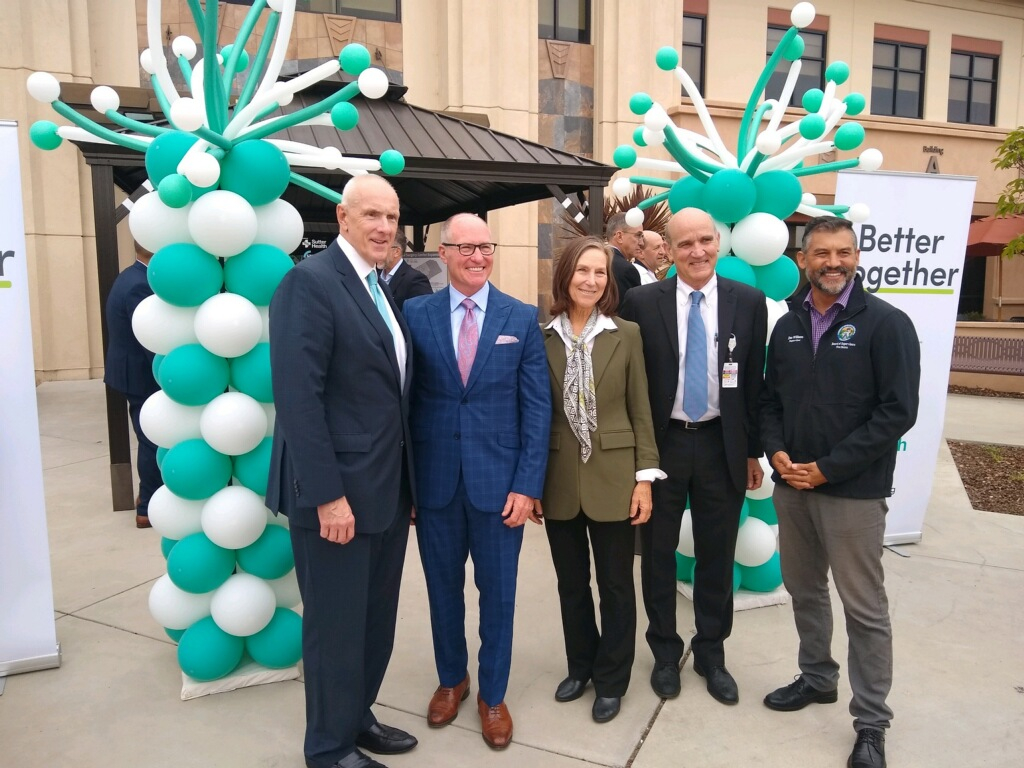The teal and white balloons said it all. At last Friday’s high-octane ribbon cutting ceremony to announce a new “strategic partnership” between Santa Barbara’s long-struggling Sansum Clinic and Sutter Health — the largest health-care provider in Northern California — all the decorative balloons were teal and white, Sutter’s corporate colors. Notably missing were Sansum’s hallmark green and blue.
The event marked what for many was a bittersweet, albeit economically necessary, moment. After 102 years, Sansum Clinic — whose doctors deliver 70 percent of all babies born in Santa Barbara County — was being subsumed by its much bigger neighbor to the north, Sutter Health.
Sansum CEO Dr. Kurt Ransohoff — who still sees primary care patients — was his humorous, charming self, telling a story about Giants pitcher Gaylord Perry finally managing to hit his first home run just 30 minutes after men first walked on the moon in July 1969. Before then, Perry’s manager had loudly dismissed Perry by saying, “A man will walk on the moon before Gaylord hits a home run.”
Ransohoff didn’t connect the dots, but in this tale, it would appear he’s Gaylord Perry. He praised the deal as the best way two like-minded medical nonprofits could ensure Santa Barbarans would have access to the quality health care they need, but that Sansum can no longer afford to provide.
Fifteen years ago, Ransohoff said, Sansum first approached Sutter for a possible merger. But the Great Recession hit and the deal was off. Then, Sansum and Cottage sought to merge, but that proposal, agreed upon by both parties, was shot down by California’s then–Attorney General Kamala Harris, who objected that the new monopoly would drive up prices. But when Sansum, like many health-care providers, took a beating during COVID, Sansum and Sutter rekindled relations.
It didn’t help that UCLA opened several specialty clinics in town, most noticeably heart and cancer care facilities. The revenues generated by these higher-paying specialties had helped underwrite Sansum’s primary care and other less-remunerative practices. With 40 percent of its patients on Medicare, Sansum had limited ability to recoup their costs given the federal government’s stringent reimbursement plans. And finally, Santa Barbara’s notoriously high cost of housing made recruitment and retention of skilled medical personnel a recurring nightmare.
By contrast, Sutter is a bona-fide King Kong. Where Sansum has 250 physicians, Sutter — with 24 hospitals, 200 clinics, and 33 surgical centers — has 12,000. Where Sansum has 1,200 staff members, Sutter has 55,000. Currently, Sutter launched an $800 million campaign to expand its future operations. Ransohoff explained that Sutter is much better-equipped to recruit young doctors to Santa Barbara and, more immediately, could accelerate the expansion of its surgical center from four ambulatory operating rooms to seven and buy women’s health imaging equipment.
Sutter’s undeniable success has generated significant backlash along the way. Five years ago, Sutter settled an anti-trust action filed by then California Attorney General Xavier Becerra for $575 million. The Becerra alleged the price of having a baby was twice as high in northern California than it was in the south — and that the price of an average procedure was 70 percent higher — because Sutter had so abused its market dominance.
However, a similar complaint filed by the federal government — for $400 million — was dismissed out of hand by a jury. But a Ninth Circuit Court of Appeals judge has indicated interest in reopening that case.
More recently, Sutter was named in a class-action lawsuit by 12 Black physicians who alleged discriminatory practices. Sutter CEO Warner Thomas — then just a few months on the job — vowed to take aggressive steps to root out such behavior.
Neither Ransohoff nor Thomas would say what the precise terms of the transaction were. Technically, the deal is known as a member replacement, with Sutter replacing all the members of the Sansum board. Warner said he might consider inviting one or two of Sansum’s boardmembers to join the new board.
At Friday’s festivities, Supervisor Das Williams said, “We’re kind of a parochial community here in Santa Barbara. We generally don’t like folks from out of town.” But he acknowledged Santa Barbara and Sansum needed all the help they could get and were happy to have it. Ransohoff added, “Sansum will be enhanced, not erased.” When asked what he would be doing in the new regime, Ransohoff said, “I’ll still be here,” and with a sigh and a chuckle, he added, “I’ll sleep better at night.”


